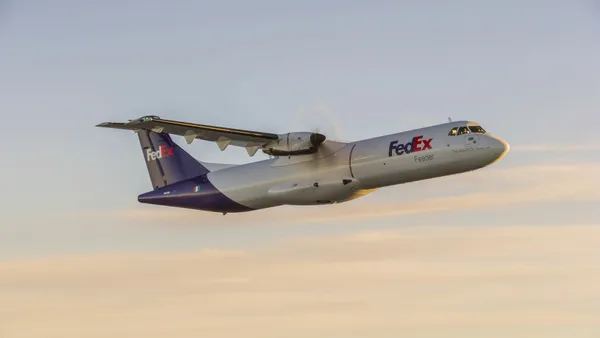Dive Brief:
- Air cargo rates continued a slowdown in January as demand was further pressured by factory closures across Asia due to the Lunar New Year holiday.
- Global air freight spot rates sank 37% YoY to $2.89 per kilogram, according to a Feb. 2 update from Xeneta’s Clive Data Services. Average spot rates from Asia Pacific to North America fell 13% month over month to $4.74 per kilogram, while rates out of Southeast Asia dropped 17% to $4.07 per kilogram.
- “The early Chinese New Year might be causing some noise in the January air cargo data with factories there closing ahead of the New Year, contributing further to a weak global market producing load factors at a level we haven’t seen for some time,” said Niall van de Wouw, Chief Airfreight Officer at Xeneta.
Dive Insight:
With more capacity coming into the market and ocean disruptions easing, shippers have taken advantage of softer market rates by moving shipments away from air freight. As the pendulum of power shifts back to shippers, businesses are expected to take advantage of the spot market for the short- and long-term.
“In 2023, we can expect a stronger emphasis on the spot market as shippers begin building new, closer working relationships with forwarders to ensure they are top priority,” Zeid Houssami, VP and global head of airfreight at Flexport, told Supply Chain Dive.
Despite the downward trend, rates ex-Asia saw a slight uptick as of this week. The current rate for shipments from China to the U.S. is roughly $4.67 per kilogram, up 4% WoW and down 46% YoY, according to the TAC Index. Meanwhile, rates from Vietnam to the U.S. are reported at $3.15 per kilogram as of Feb. 6, up 7% WoW, albeit still down 73% YoY.
In addition to softening capacity, factors like inflation, slowing global economy and more supply than demand have also played a significant role in 2023’s rate outlook, Houssami said. In turn, input costs and jet fuel prices are likely to remain high, and while there may be some normalization by year end, the global average for air freight rates will remain roughly 25% to 30% above pre-COVID levels, when adjusted for the cost of jet fuel.
With more capacity coming online and increased stability for ocean transport, there are a couple factors that could potentially level out the market, he added. This includes pandemic-related restrictions in China which have recently lifted, enabling the return of international travel.














